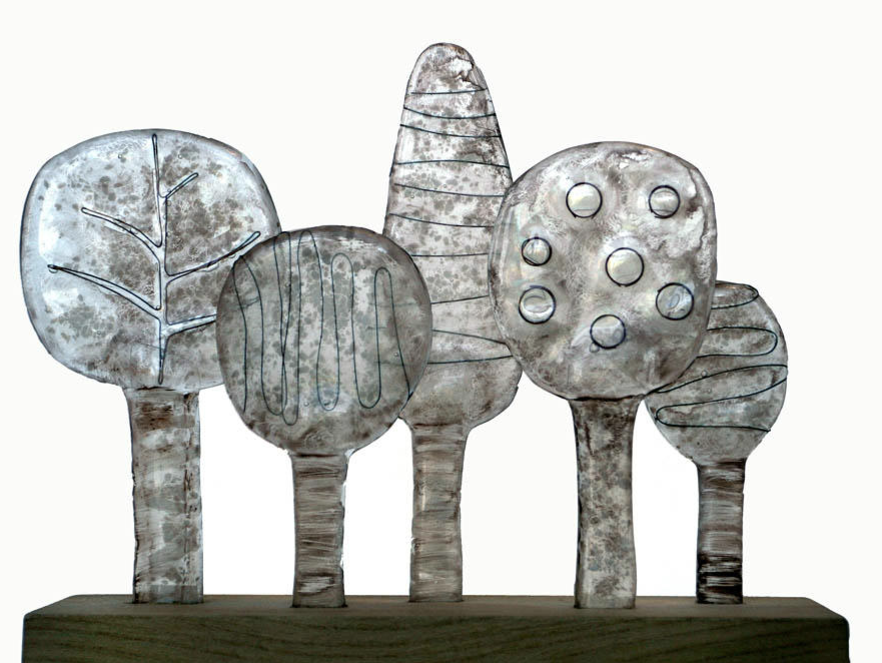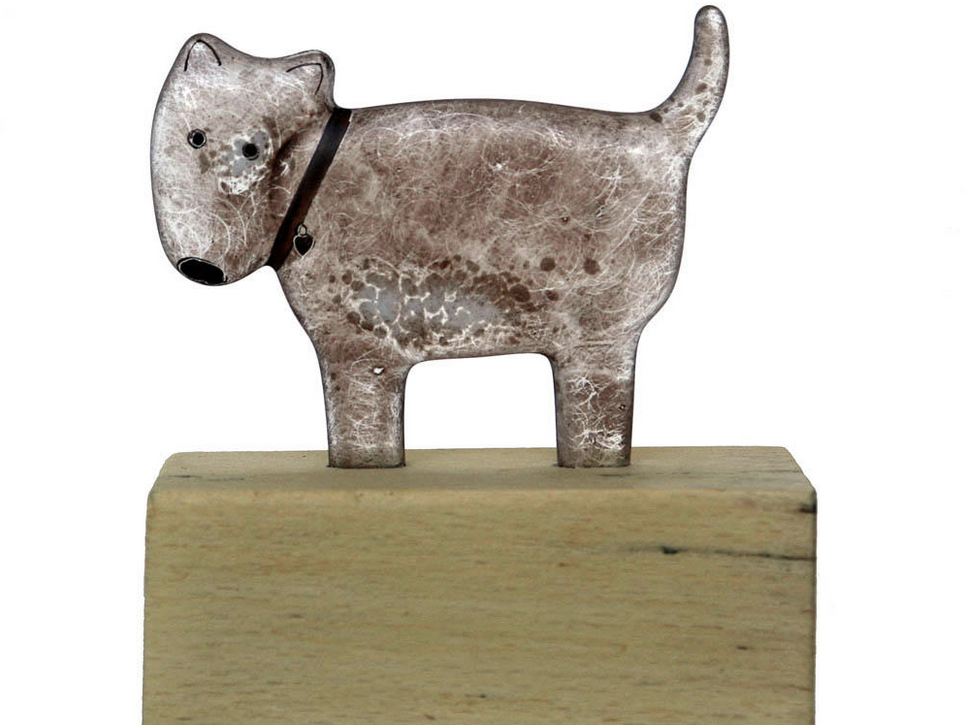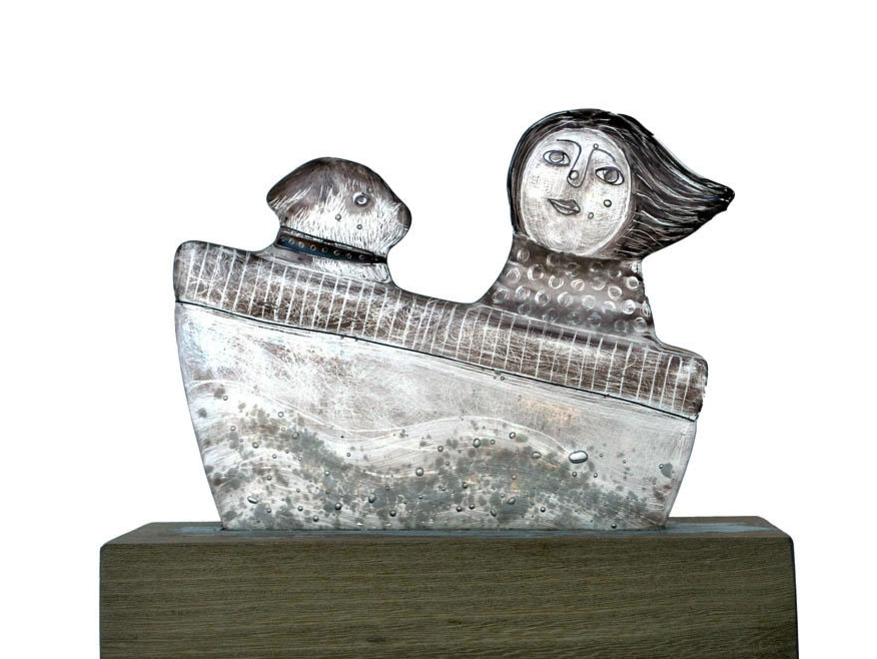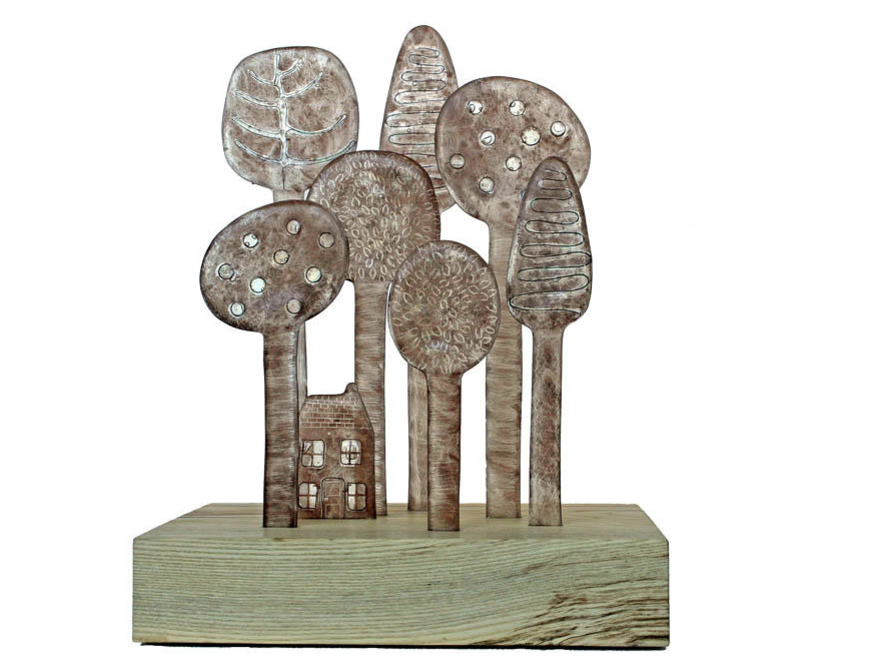Danielle Hopkinson
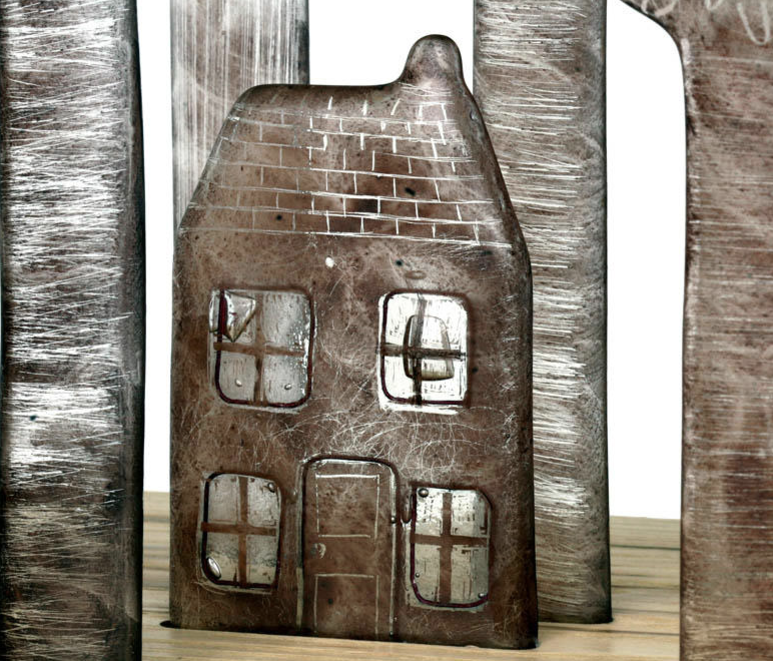
The Stained Glass Studio
5 - 7 Stoke Street
Ipswich
Suffolk
IP2 8BX
Using a variety of kiln-based techniques, including painting, silver staining, fusing, casting and slumping, Danielle produces architectural stained glass. Her work ranges from large scale fixed pieces to interior screens, hanging panels and mirrors. Much of her commissioned work reflects the ideas and themes introduced by the client, while her exhibition pieces are inspired by natural forms and her own surroundings. Danielle studied Architectural Glass at Swansea College of Art and is a member of the British Society of Master Glass Painters. Read this interview with Danielle...
Read more including an interview with Danielle >
Woman of glass
Danielle Hopkinson is a designer with a successful business in stained glass. Her work ranges from small inexpensive stars or birds to large murals and windows for public buildings and private houses. Diana Grace spoke to her in her Ipswich studio.
What made you take up such an unusual career?
When I came to the end of a foundation art course year at Swansea Art College I was set to embark on a Fine Art degree but I panicked when I saw students’ work which I couldn’t relate to - typically a canvas with a green spot in the middle - and I wondered what on earth I could possibly do after graduating. The architectural stained - glass department at Swansea was an exciting place to be at the time, attracting big names from all over the world. It was very practically based which suited me. I managed to get a last minute place for a three-year course. What happened after you graduated from Swansea? It was hard going. I came to East Anglia with my now husband, Ian, who was doing a course in classic car restoration at Colchester Institute but it was during the recession and I couldn’t find a placement so I did whatever jobs I could find, painting and decorating, that kind of thing. I then managed to secure a small grant from The Prince’s Trust for a feasibility study and some market research. My Swansea course had given me the skills to know how to set about this.
Then how did you get started?
In 1993 I set up in a converted pig sty on a farm in Burstall where I stayed for three years. Ian and I, with my father’s help, and a very patient and supportive landlord, replaced the sloping roof, boarded and painted it. A three year loan from The Prince’s Trust at a low rate helped me to acquire my first kiln from an exlecturer of mine. The pig sty was cheap to rent and quite spacious but isolated and often days went by with only the farm cats for company, Ian was working in London renovating buildings and of course I knew no other craftspeople or galleries in Suffolk. I went to craft fairs and shows and gradually started to get commissions. My practical training really helped me to know how to organise commissions so that terms were clear for both the client and me. The Prince’s Trust with its loan and advice was also invaluable and during the Jubilee year I represented the Trust when the Queen came to Suffolk.
A lot of your work is commissioned. What qualities are needed when you work for a client?
I have to tailor my own ideas to the client’s specifications so it is important to be able to work harmoniously while not losing sight of my own style. I start with a scaled-down design and then produce a full-size cartoon showing the correct sizes of the leads for the customer to approve before I do any cutting. I also have to agree a price with the client at the outset because the costs of specialist glass vary enormously from fifty pounds a metre for commercial glass to five hundred plus for some handmade glass.
Where do you get your glass?
Most handmade glass is imported from France, Germany and Poland as there are only two tiny companies still in England, though once there was a huge industry. I get mine from warehouses in London. It is like going to a sweet shop seeing the most beautiful colours and textures but I have to restrain myself and keep to budget.
How exactly do you set about making the stained-glass piece?
I put tracing paper on top of the cartoon. This becomes my cut line allowing spaces for the leads. I then cut the glass. Any hand-painting, etching, sand blasting or fusing is done then. I use specialist glass paint which I build up in layers with a fine brush or I may use enamels. All these are unstable until they are fired so with each process the glass goes into the kiln for eight or nine hours. When fusing you have to ensure that all the glass that you layer is compatible else it will break in the kiln. After the final firing the cooled glass is laid flat on the bench to be leaded and soldered and lastly it must be cemented with black putty brushed into the leads to make it waterproof and stable. It sounds like a long and laborious process. Everything depends on the size and complexity of the job. One commission that I recently completed which was designed by Dale Devereux Barker for a twenty foot high window for an architect’s house in Cheshire took us six months. Another was the rose window in St Pancras church in Tacket Street, Ipswich which was commissioned for the Millennium. Simpler jobs may take only a week or two. I work in partnership with Ian. I do the designing and painting and often he does the cutting and leading and both of us take turns to look after our three year old daughter.
How has membership of Suffolk Craft Society helped you?
I was honoured to be offered membership while very young. The Society has helped me to make friendships with other makers, to find out about local galleries and exhibitions and encouraged me to exhibit my own work, free - hanging pieces suitable for people to display in their homes. There is a lot of creative talent and a history of craftsmanship in Suffolk. I came here initially for two years but I am still here after sixteen, which speaks for itself.
